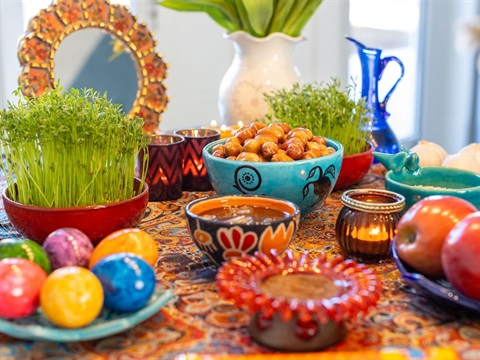The Haft-Sin Table

The Haft-Sin table is a central tradition of Nowruz, symbolizing renewal, abundance, and prosperity. It is carefully arranged with seven items, each beginning with the Persian letter 'S' (Sin) and representing a different aspect of life and nature.
These items include:
- Sabzeh (Sprouted Wheat or Lentils): Symbolising rebirth and growth.
- Samanu (Sweet Wheat Pudding): Representing strength and patience.
- Senjed (Oleaster): A symbol of love and wisdom.
- Seer (Garlic): Representing health and protection.
- Seeb (Apple): A sign of beauty and good health.
- Serkeh (Vinegar): Symbolising patience and aging wisdom.
- Somagh (Sumac): Representing the sunrise and the triumph of good over evil.
In addition to these seven key items, the Haft-Sin table can also often include four other symbolic items:
- Coins: Representing wealth and prosperity.
- Goldfish: Symbolising life and progress.
- A Mirror: Signifying reflection and clarity.
- Coloured eggs: Representing fertility and new life.
The Haft-Sin table remains on display for thirteen days, after which families often celebrate Sizdah Be-dar, a picnic in nature to mark the end of Nowruz celebrations.